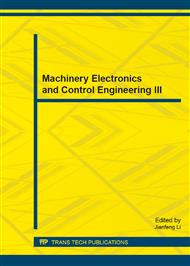p.530
p.534
p.543
p.548
p.552
p.557
p.561
p.568
p.572
Radiation Disturbance of Variable Frequency Winch Drive System in Underground Coal Mines
Abstract:
In order to study the effect of variable frequency drive system upon electromagnetic radiation environment in underground coal mines, the mechanism of electromagnetic radiation from the variable frequency speed regulation system has been analyzed deeply, and the radiated electromagnetic noise from the variable frequency winch system with rated voltage of 1140V in underground coal mines has been measured. The measuring results show that the radiated emission from variable frequency drive system has certain effects on electromagnetic radiation environment in underground coal mines. The maximum radiated E-field strength reaches 123dBμV/m within the range of 9kHz to 20MHz nearby the frequency converter, and radiated E-field strength is no more than 33dBuV/m above 20MHz. Nearby the winch motor, the radiated E-field strength is weak, but the frequency spectrum of radiated E-field noises is more wide, which mainly distributes from 20MHz to 1GHz, but the maximum radiated E-field strength is less than 37dBμV/m above 20MHz.
Info:
Periodical:
Pages:
552-556
Citation:
Online since:
December 2013
Authors:
Price:
Сopyright:
© 2014 Trans Tech Publications Ltd. All Rights Reserved
Share:
Citation:


